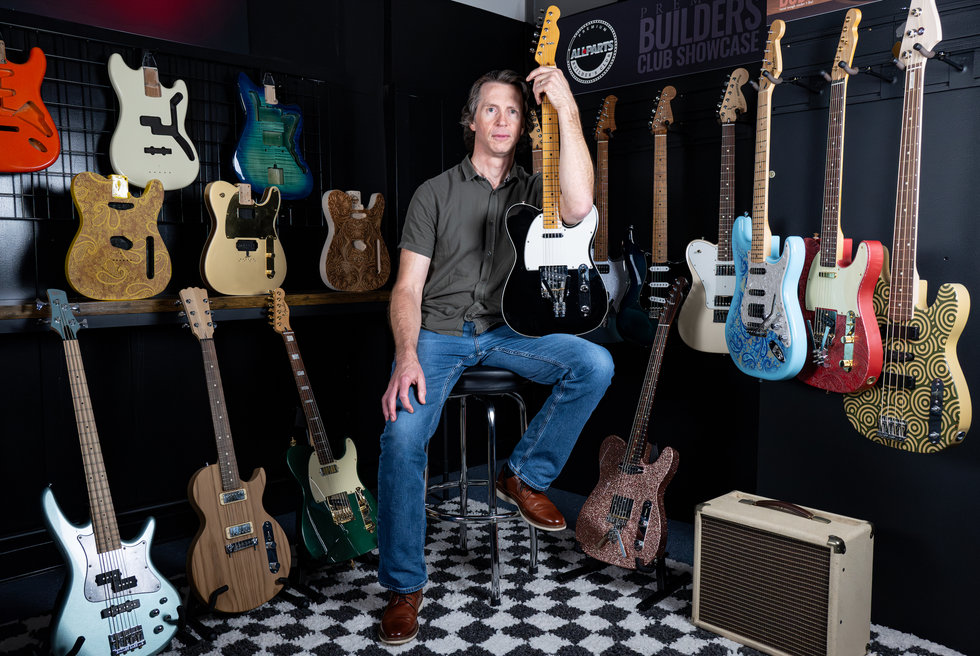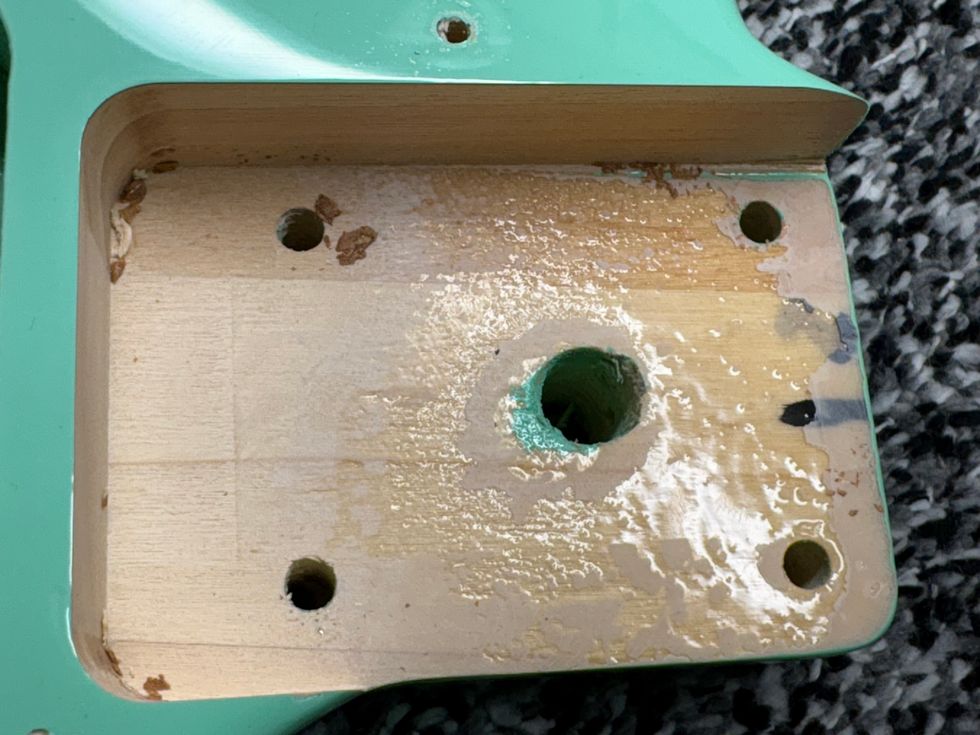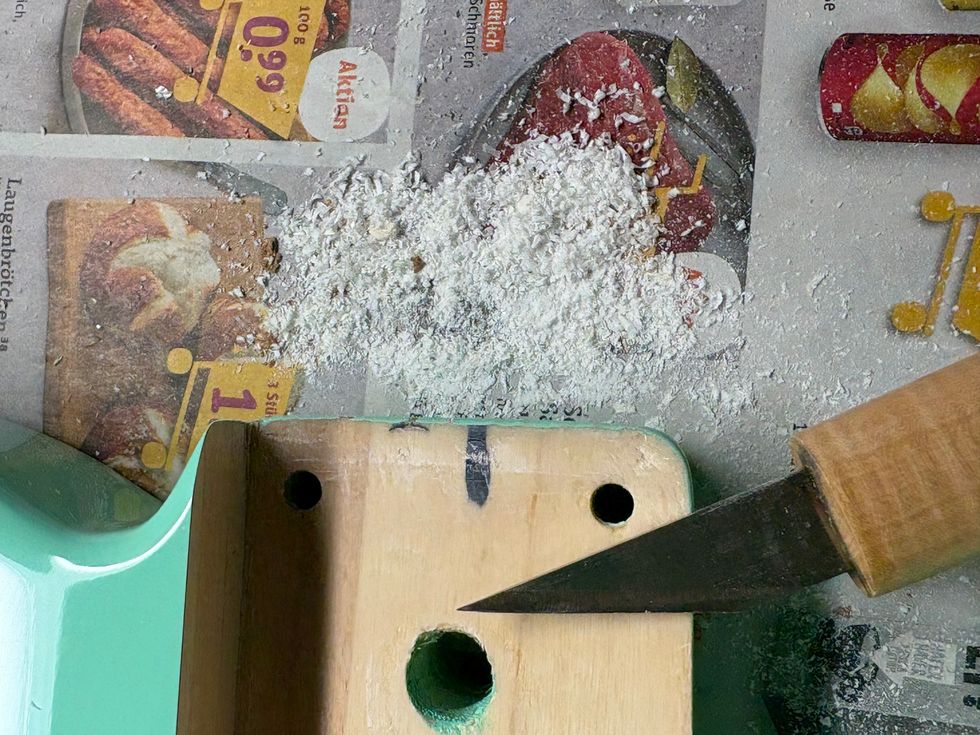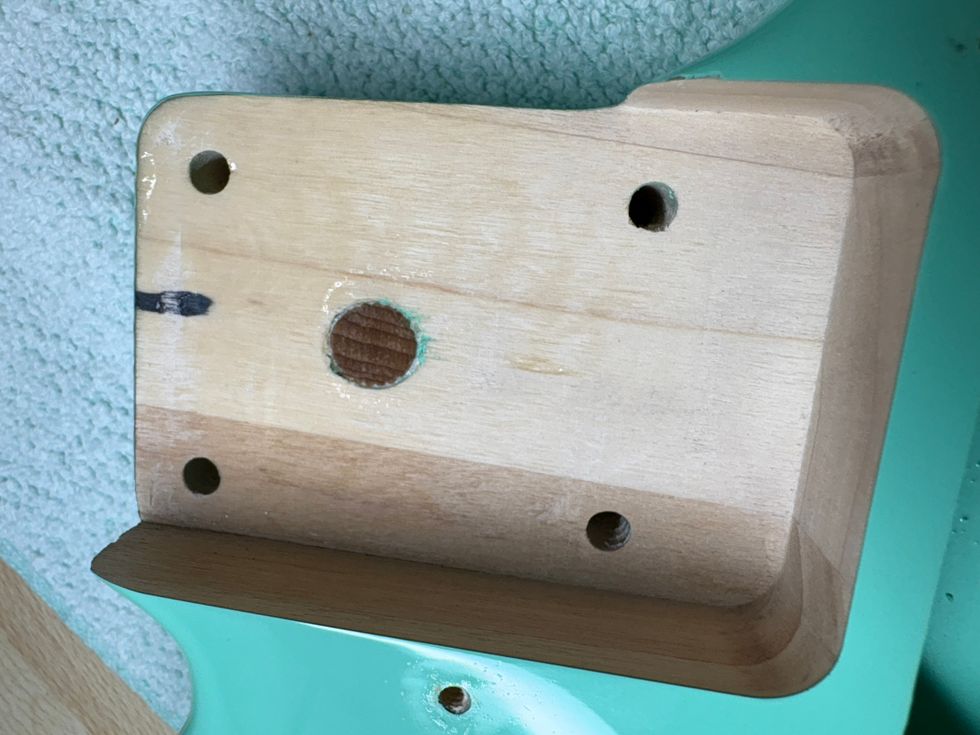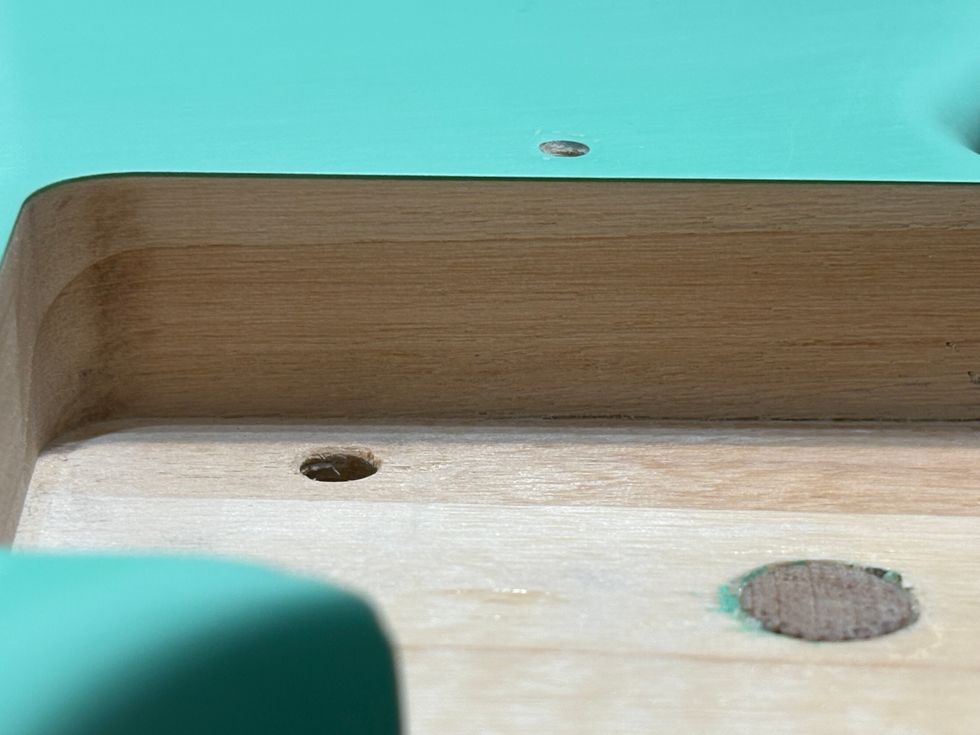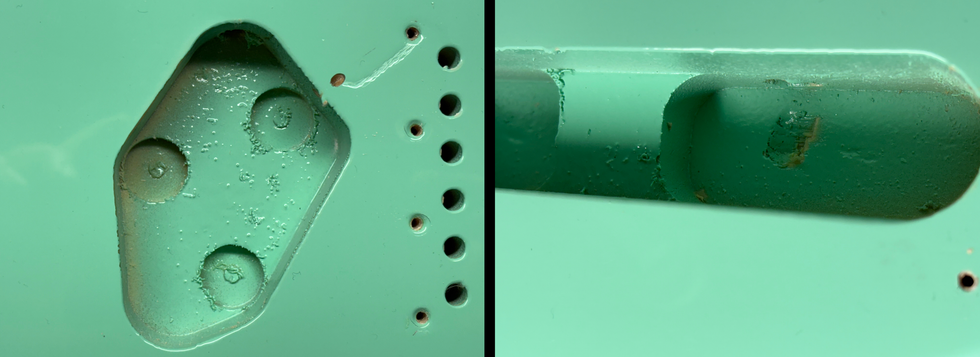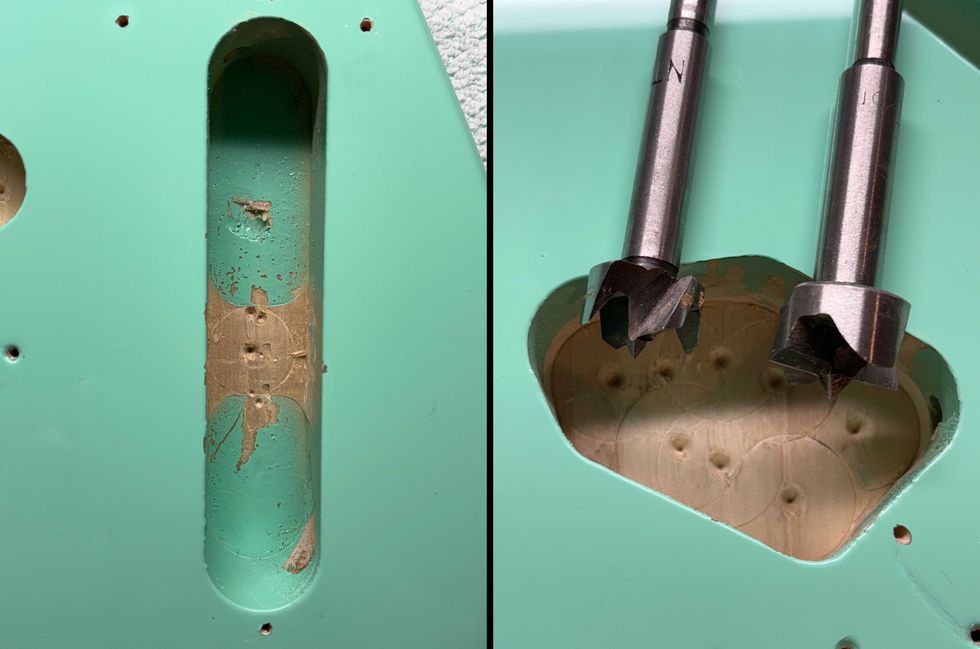Dear Amp Man,
I have a Tusc DF-100. I've never heard the amp, as it was dead when I got it, and it hasn't been played in years. I'd like to get this baby up and running, and I was hoping you could walk me through the process and maybe give me some idea of what I have here. She's all-tube, with four 6L6GCs and two 12AT7s. There's reverb, and what I'm told are two 12" Fane speakers. I'm also told that channel 1 is a very blackface-like, while channel 2 has programmable digital effects. I'll assume the preamp tubes are fine until proven otherwise, though I plan to replace the four output tubes and the electrolytics in the power section. Any assistance will be appreciated.
Doug Guillaume
Hi Doug,
Thanks for writing in about this unusual early-'80s amp. No Tusc has ever crossed my bench, but I did some research, and it's an interesting amp!
Tusc was originally based in Central Islip, New York, and apparently run by a gentleman named Craig Frye. While these amps used a tube phase inverter (driver) stage and a 6L6-based output stage, Tusc's claim to fame was a “programmable" front end. There were no effects—or anything digital in the audio path, for that matter—but they could store and recall some gain and EQ settings for channel 2, a unique feature for the time. Many of the regular parts—passive components, speakers, etc.—were purchased from Qualtrol Electronics, a military subcontractor in the area. Qualtrol had built the earlier Earth Sound Research amps, and they liquidated the stock when that company folded.
for the time.
While some Earth amps looked similar to early Peavey amps, most are covered in the beautiful tuck-and-roll style we associate with Kustom amps. This is interesting, because Earth amps were built using surplus parts sourced from the defunct Plush Electronics Company, another manufacturer of tuck-and-roll beauties. (In the words of my friend Andy Fuchs, “It's all part of the New York/New Jersey incest of guitar amp companies that came and went over the years.") Anyway, the Tusc company only lasted a few years. Near the end it relocated to Clifton, New Jersey, and produced the DF-55, a Portaflex-style bass amp, in conjunction with Jess Oliver, the original Ampeg Portaflex designer.
Now let's see if we can troubleshoot your piece of amp history.
The only thing I know is that the amplifier is dead, so let's start with the basics. First, let's check the speakers. If you don't have a multimeter to check their resistance, the quickest way to see if they're working is with a 9V battery. Touch one battery terminal to the sleeve of the speaker plug and the other to the tip. If you hear a thud and the speakers move, they should make some sort of sound if the amp is working.
Now on to the amp itself. First, pull all the tubes. Now, does the pilot light come on when you switch the amp on? If not, check the fuse.
Photo 2
Next, see if the amp powers up in standby. If so, we can move on. If not, there's a problem in the main part of the high-voltage power supply. Or, since this amp also has solid-state circuitry, there may be a problem in the low-voltage supply. In the high-voltage supply, either one or more of the diodes are shorted, or one or more of the main 100 uf 450V caps are shorted (Photo 1). In the low-voltage supply, it could be the diodes, caps, or transistors (Photo 2).
Photo 3
If the amp powers up in standby, put it in operate and see what happens. If it blows the fuse, there's a problem with the remaining filter caps in the high-voltage supply (Photo 3).
Photo 4
If you've gotten this far, reinstall the tubes and see what happens. With the amp off, install one pair of output tubes, one in a left socket and one in a right socket (Photo 4). (It doesn't matter whether it's the two inside or two outside sockets.) Turn the amp on, let it warm up, and then switch to standby. If the amp stays on, you may get a little hiss from the speakers. Power down, remove those two tubes, and repeat the procedure with the other two power tubes. If all is good again, then the output tubes are probably functioning.
Next, reinstall the two preamp tubes. At this point, either the amp is working, or it's on but has no sound. If no sound, try replacing each preamp tube to see whether that cures the problem. If not, with the amp on, plug your guitar into the effect loop return jack and turn the master volume up. If you have sound, then the output stage is performing properly, even though the front-panel controls aren't presently working. That means the problem is in the front end. If there's no sound, there may be a transformer issue, and you need to start checking both the high voltages and the low-voltage supplies for the IC chips.
Photo 5
If all voltages are good, then the problem is probably one of the 8-pin audio op-amps. I suggest replacing IC 1 thru IC 5 first (Photo 5), as they are in the primary signal path. It might be fun to install sockets and experiment with other compatible dual op-amps (such as the 1458, 4558, TL072, or TL082). They all sound a bit different, especially overdriven. You can also try different preamp tubes, such as the 12AX7, 12AT7, and 12AU7.
I haven't covered every possible failure, but hopefully these tips will help you sharpen that Tusc!


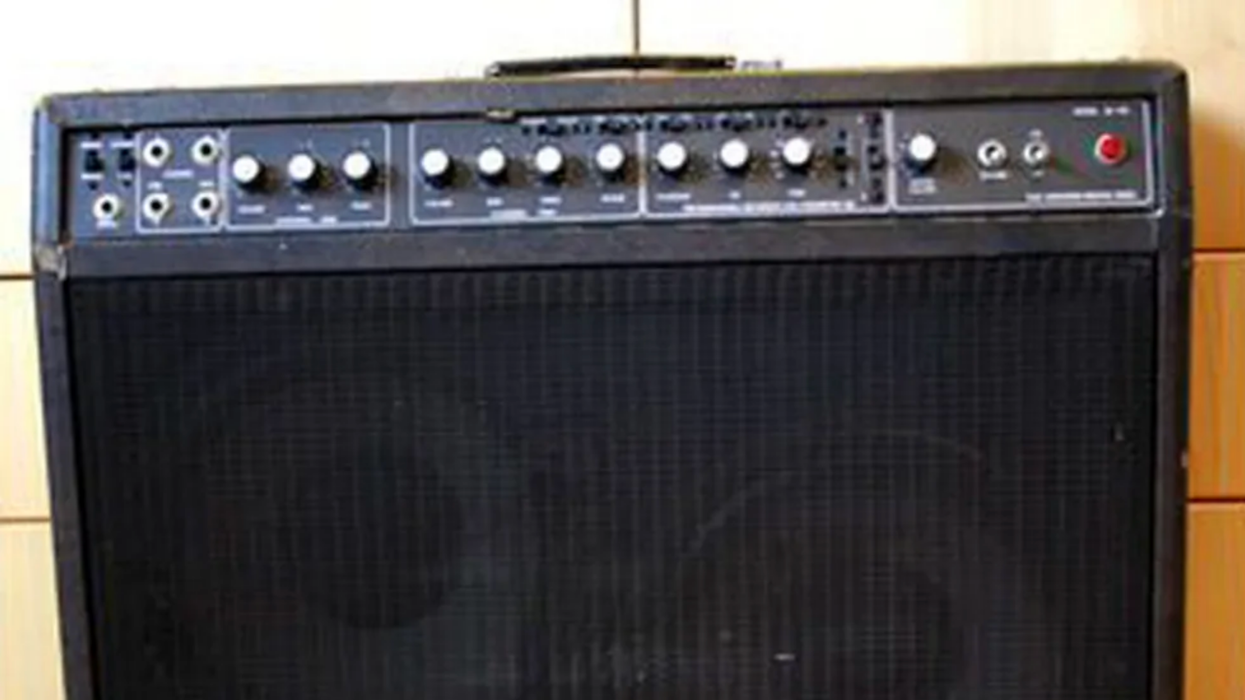

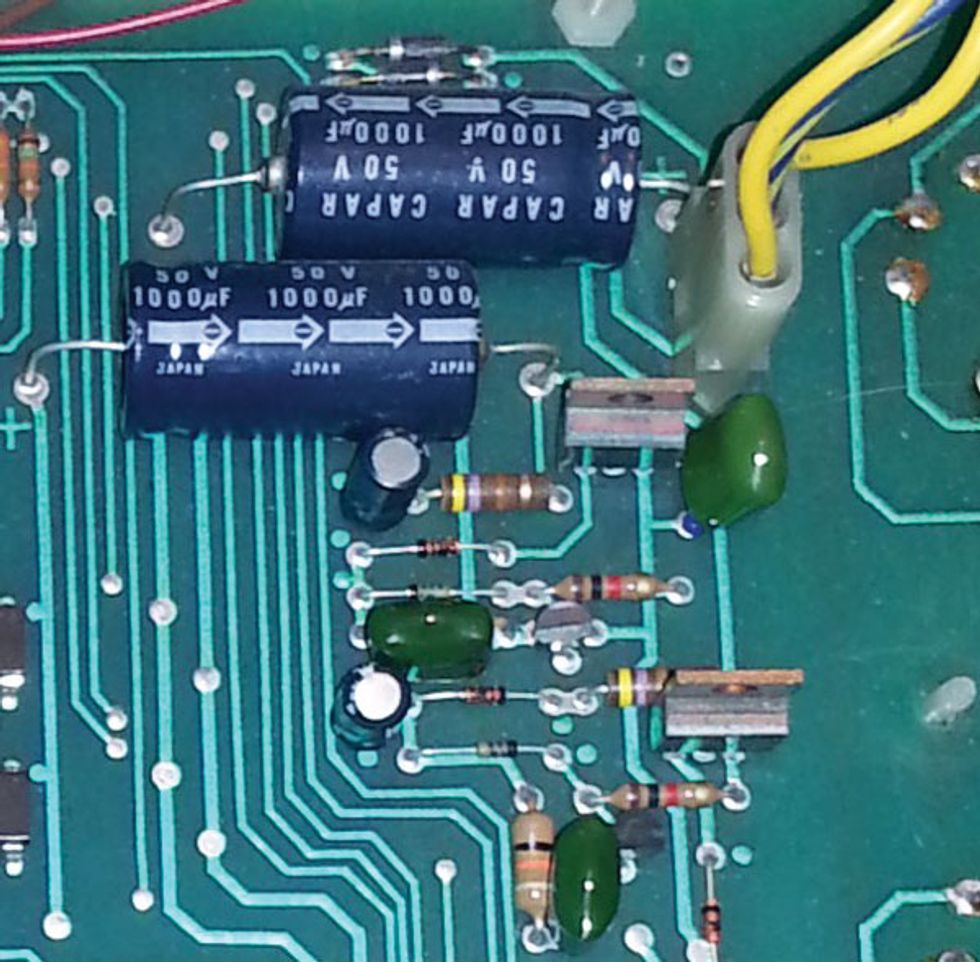
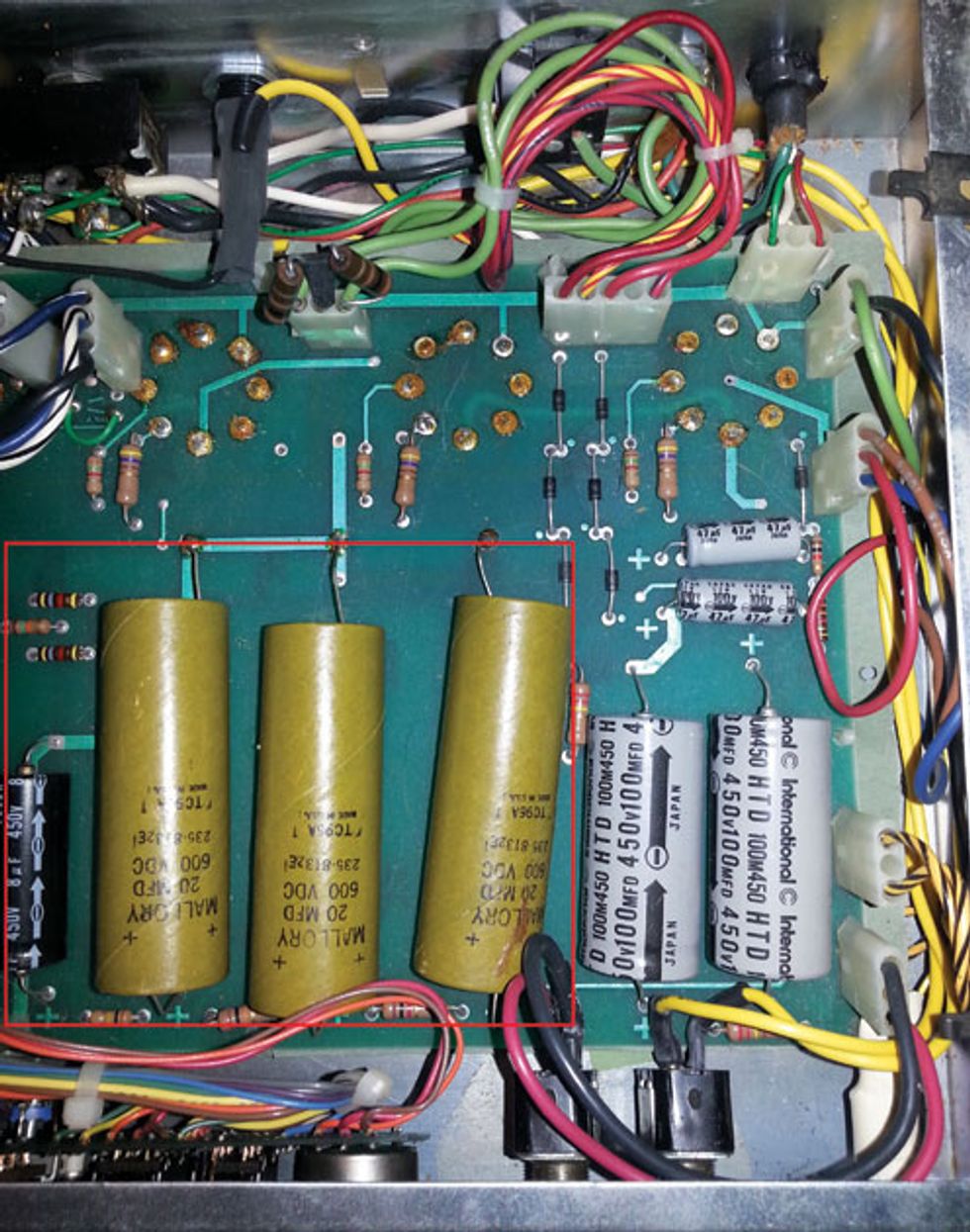
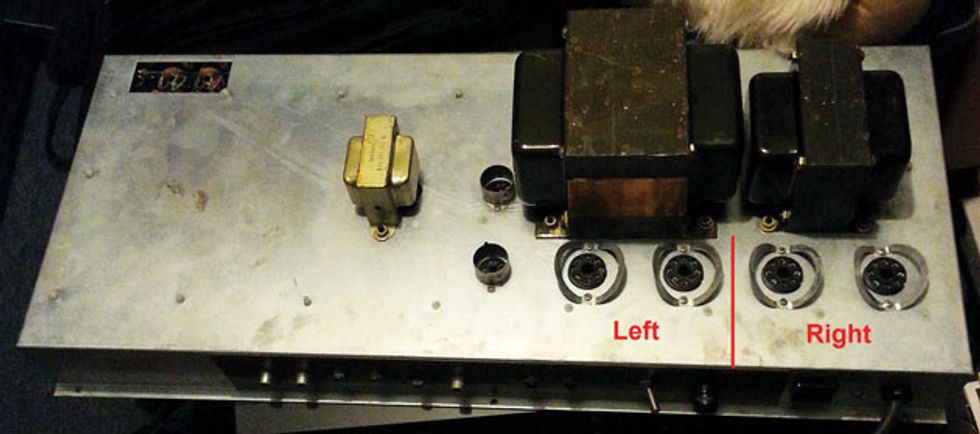
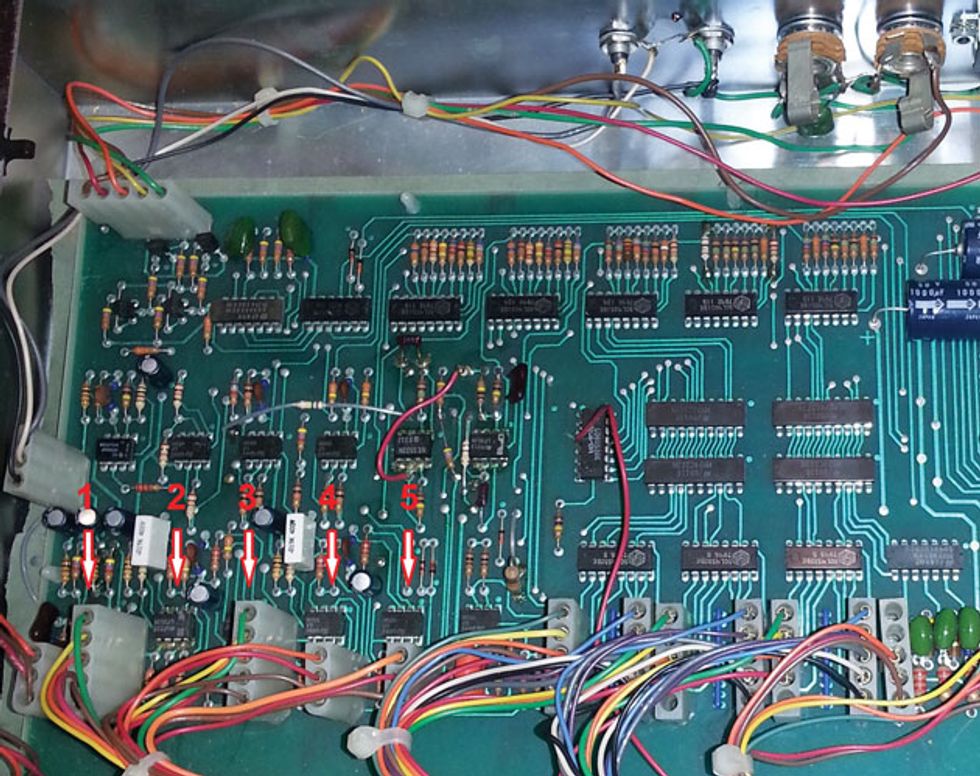
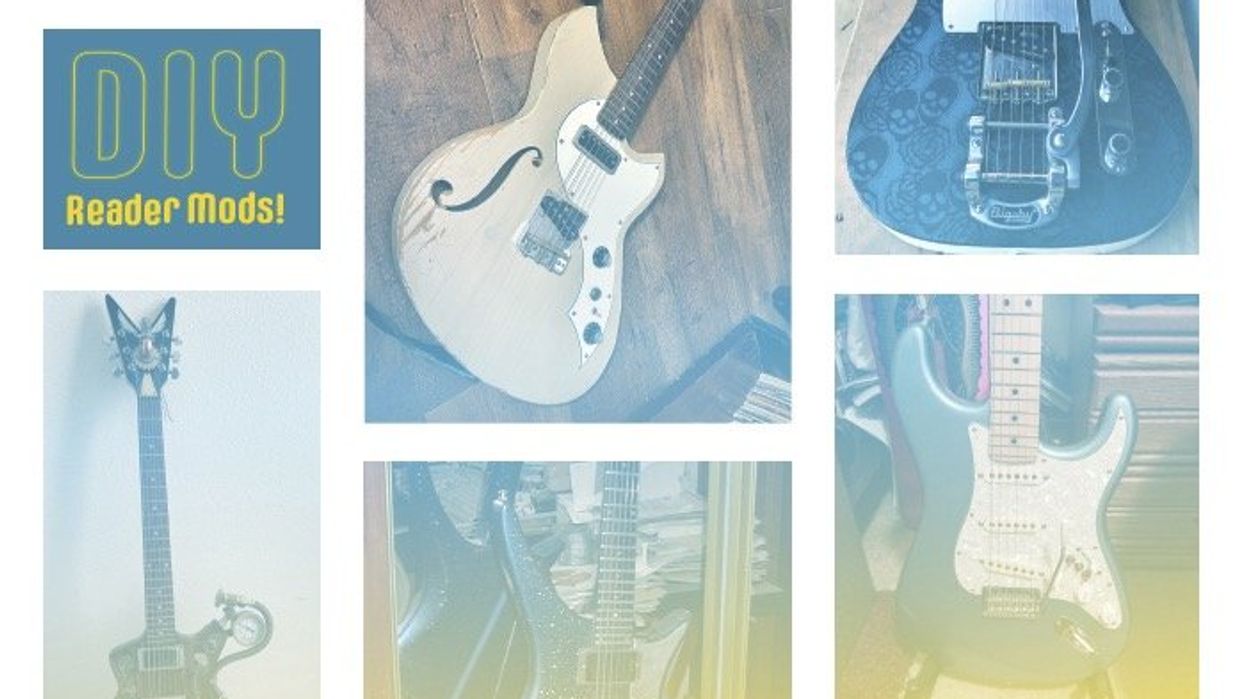
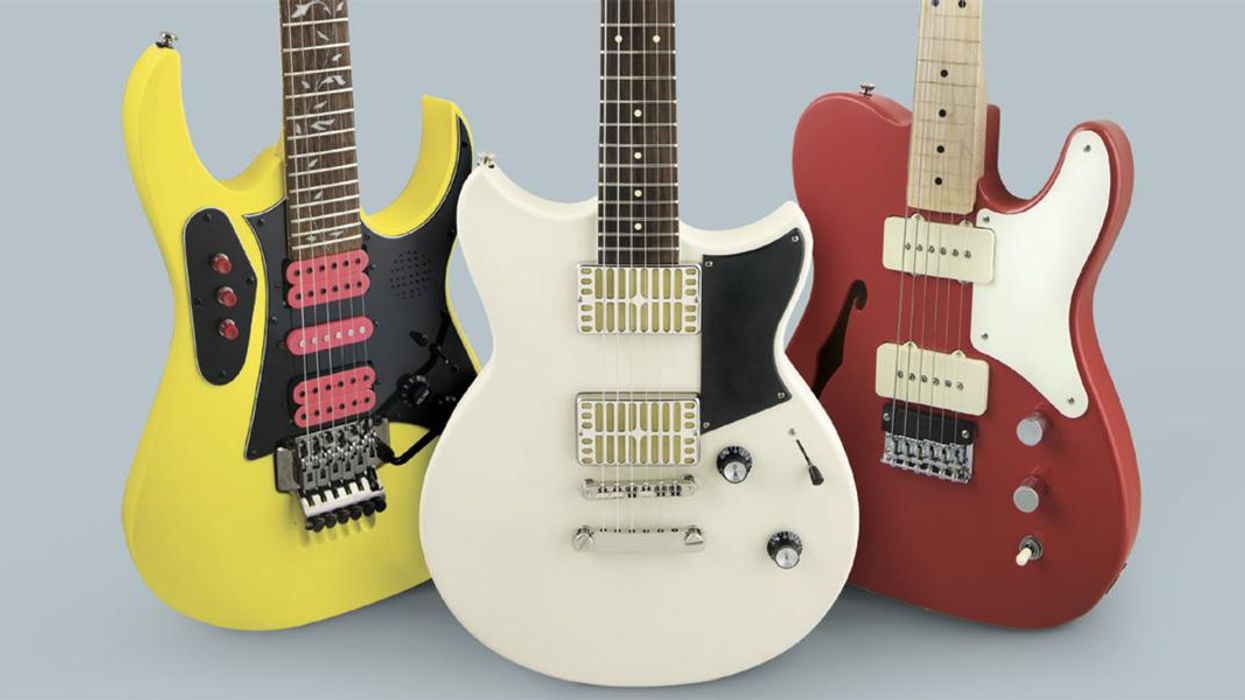
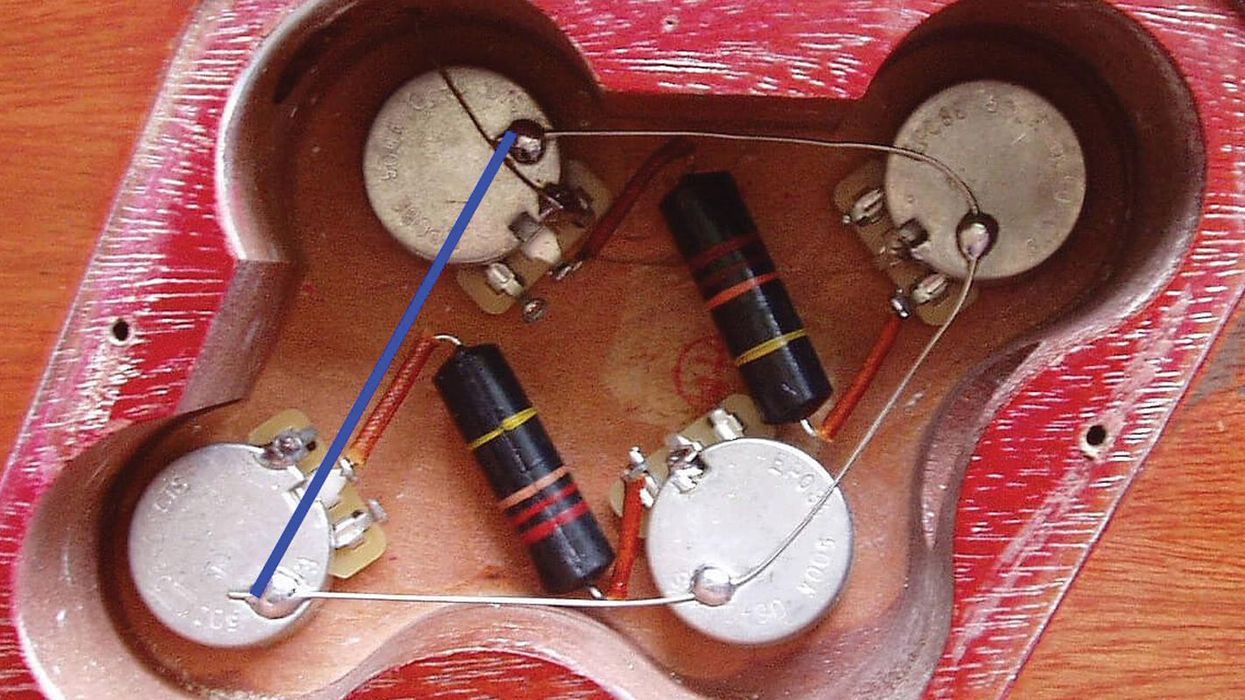
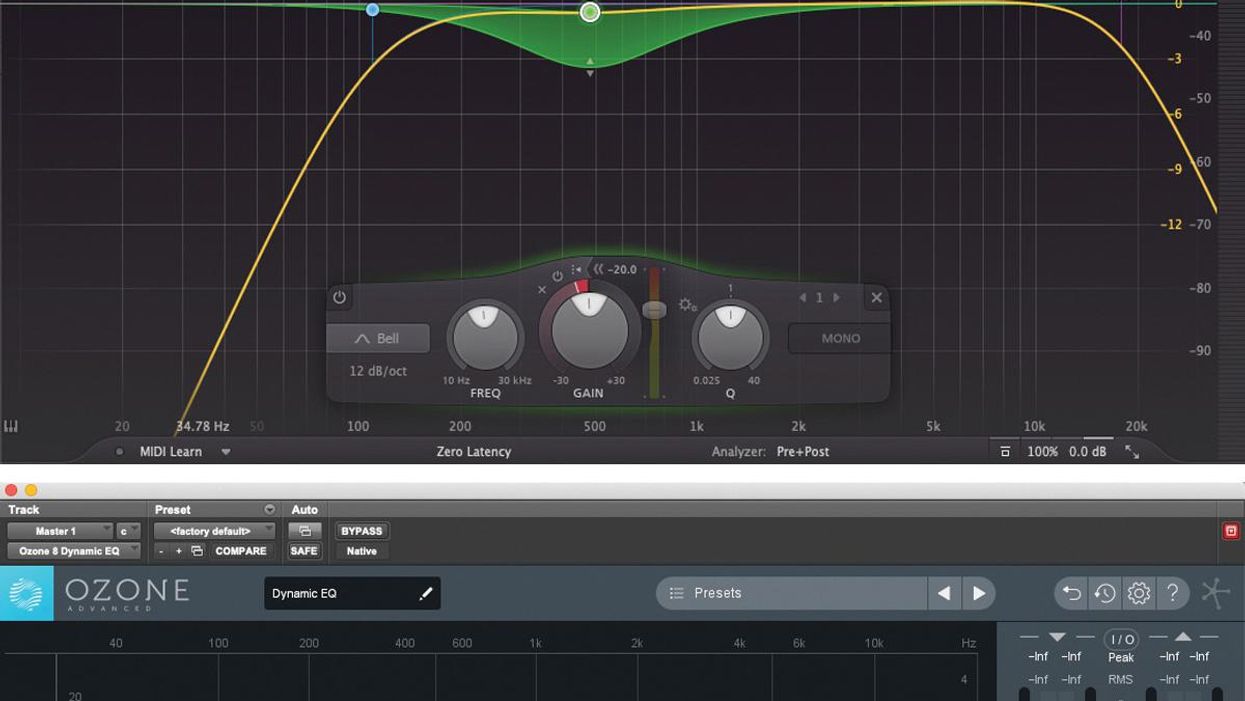













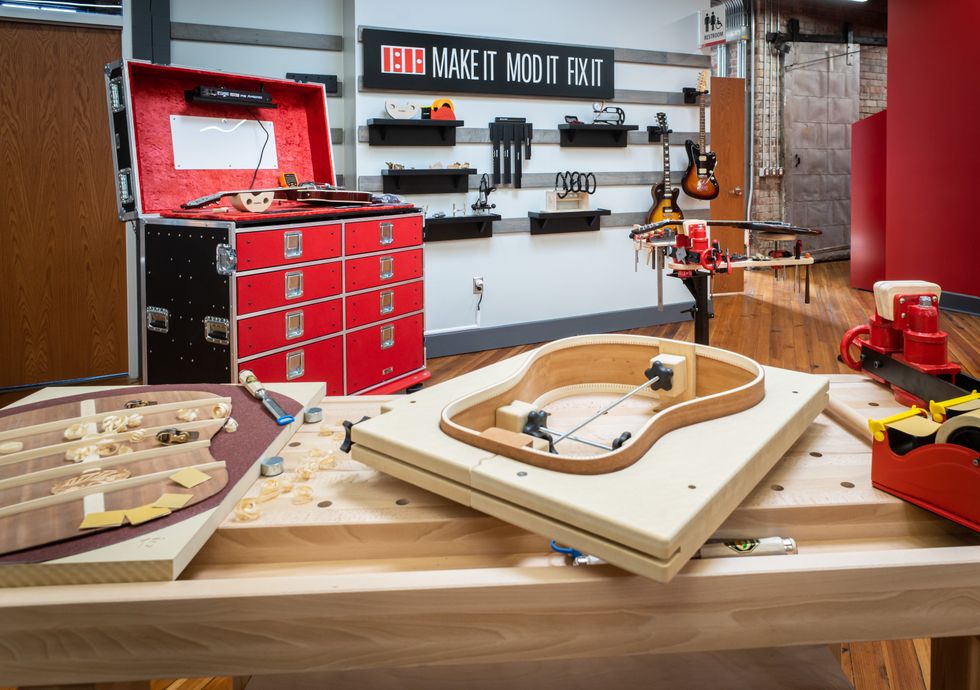

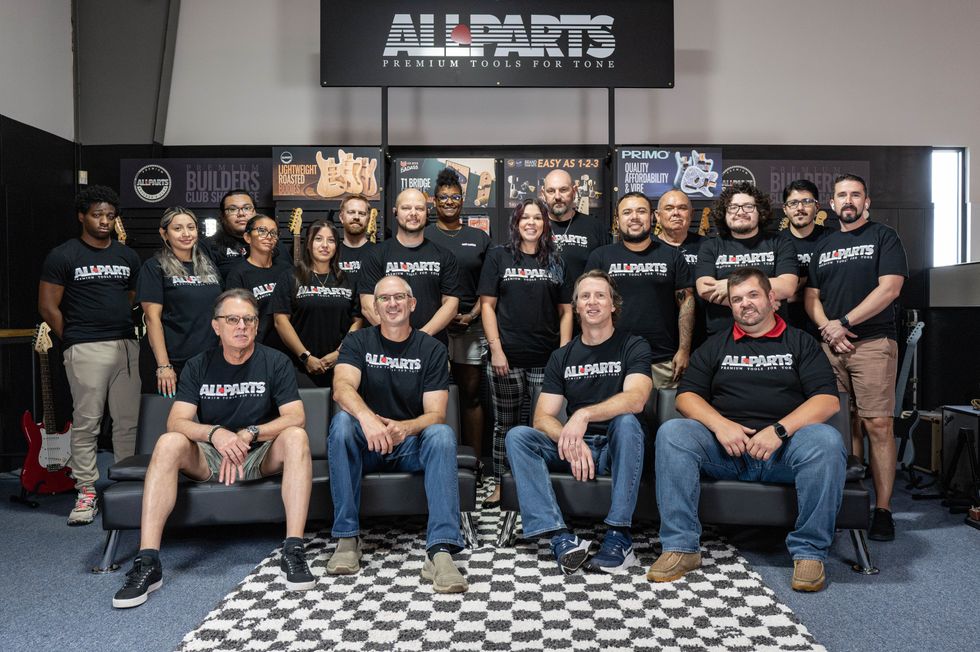 The Allparts team at their Houston warehouse, with Dean Herman in the front row, second from right.Photo by Enrique Rodriguez
The Allparts team at their Houston warehouse, with Dean Herman in the front row, second from right.Photo by Enrique Rodriguez